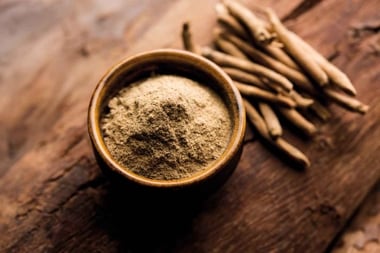
Adolescence marks a radical life change. Everyone looks and smells different, emotions shift unpredictably, and a host of new privileges and responsibilities appear. In the face of these monumental changes, hormones are blamed for many teen health issues.
The hormonal matrix
Hormones do drive the transition through adolescence. Dehydroepiandrosterone sulphate (DHEAS) is a hormone that plays an important role in making estrogen and testosterone. Its increased secretion from the adrenal glands launches puberty, causing physical changes like increased production of sebum (oils), sweat glands, and hair.
Hormones certainly drive the transition through adolescence, beginning with the development of the adrenal glands between the ages of 6 and 8. Dehydroepiandrosterone sulphate (DHEAS) rises, eventually causing increased production of sebum (oils), sweat glands, and hair.
A separate hormonal cascade sends luteinizing hormone (LH) and follicle-stimulating hormone (FSH) from the pituitary gland downstream to the reproductive organs. The ovaries and testes respond, producing estrogen, progesterone, and testosterone. These hormones join insulin, growth hormone (GH), and insulin-like growth factor 1 (IGF-1) in championing the transition to reproductive and physical development.
Brain growth is also driven by the pubertal hormone surge, but at different rates in different areas. The planning and regulating area (prefrontal cortex) may not mature until the mid-twenties, while the major centre of emotional processing (amygdala) develops early in puberty. Impulsive, emotional, and even risky behaviour is possible until the brain learns to regulate itself. Hormones are powerful agents of transformation.
Additional nutrients for teen growth and development
- calcium
- phosphorus
- folate
- vitamins A and C
- magnesium
- fibre
- selenium
The teen wellness warrior!
Alongside the expected changes of puberty, new health concerns can also develop around this time. Erin TeWinkel, ND, is a passionate advocate for teen wellness and helps her patients identify symptoms that could herald deeper issues.
Puberty or pathology?
Teens raising legitimate concerns about their mood, skin, or menstruation may be told “it’s just your hormones” and dismissed. “Teens deserve the same assessments as adults,” stresses TeWinkel, “not invalidation.” Blaming raging hormones for all teen concerns results in undiagnosed and untreated health issues.
TeWinkel highlights some menstrual changes that warrant careful investigation:
- Infrequent or absent periods: Periods can be thrown off by overexercise, excessive weight loss, abnormal thyroid hormone levels, and polycystic ovarian syndrome (PCOS).
- Heavy periods: Fibroids, endometriosis, PCOS, or pelvic inflammatory disease should be considered.
- Painful periods: Endometriosis, adenomyosis, fibroids, and pelvic inflammatory disease can cause this symptom.
Hormonal concerns of non-menstruating teens also merit thorough assessment:
- Acne: is a hallmark of adolescence, but high testosterone levels can cause severe or persistent acne.
- Moodiness: may be common, but consider depression if low mood is ongoing and affecting daily life.
- Fatigue: can be caused by late nights and busy schedules, but it can also be caused by thyroid dysfunction, nutrient deficiencies, and sleep apnea.
Failing to identify these issues in adolescence allows for needless suffering and possible long-term health effects. Simple blood tests may diagnose concerns and guide appropriate treatment.
Adolescent supplementation
Take a look at these essential nutrients for teen growth and development:
- Vitamin D supports bone development in teen years.
- Vitamin B12 is a factor in mood, energy, and blood production.
- Iron levels should be checked in people with heavy periods or those avoiding animal products.
Dr. TeWinkel recommends testing levels of these nutrients prior to supplementation.
Leading the leaders
Alongside her work with teens, TeWinkel helps parents to parent.
Lead by example
Check your own habits when giving advice to teens about exercising, eating breakfast, and spending less time on their phone.
Say yes to connection
Take opportunities for solo time with your teen. Conversations while walking or driving can be surprisingly intimate. Plan short, regular opportunities to connect.
Ask before advising
Do they want your suggestions? Simple listening can provide powerful support.
Honesty builds trust
Apologize without saying “sorry, but…”. Own your mistakes if they’re pointed out. Teens notice contradictory advice and actions.
Eat dinner together
Family meals, providing opportunities for connection, are also associated with fewer depressive symptoms and improved self-esteem in teens.
Let them eat protein!
Parent/child conflicts over food are stressful for everyone. Shifts in adolescent melatonin production lead to later bedtimes, putting adequate sleep at odds with school start times. Consequently, teens may skip breakfast, leaving them under-fueled for the day’s activities. By dinnertime, teens are running on empty, especially if social and academic activities have replaced lunch.
TeWinkel steers well-meaning parents away from pushing the food rainbow and toward providing accessible, nutrient-dense foods. “Give them fuel,” she advises, discouraging dietary perfectionism and moralizing “good” and “bad” foods. She recommends offering a wide variety of healthy food options but is equally supportive of portable protein choices like bars and drinks. “Everything changes when they eat regularly,” she says.
Stress-busting advice
Stress is another common concern for TeWinkel’s patients. She highlights movement and exercise as important stress-busters. She discusses social media use, recognizing the risks in this tool for connection. “How do you feel after being online?” she asks, encouraging teens to curate their feeds to feature positive, inspiring messages.
Puberty takes adolescents and their parents through a complex dance of hormones, emotions, and physical changes. Listening, responding, and easing up on expectations helps parents and teens through this life-changing step toward adulthood.
The dirty truth about intimate cleansers
Our bodies don’t need anything more than soap and water for “intimate cleansing.” Sprays, perfumes, and powders may lead to irritation and yeast infections.
Decoding puberty hormones
- LH = luteinizing hormone
- FSH = follicle-stimulating hormone
- GH = growth hormone
- IGF-1 = insulin-like growth factor 1
- DHEAS = dehydroepiandrosterone sulphate
This article was originally published in the August 2024 issue of alive magazine.





